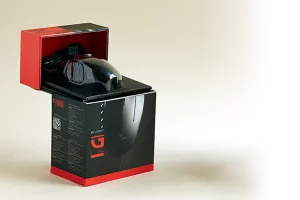Embracing Sustainable Packaging: A Guide to Eco-Friendly and Recycled Solutions
In today’s world, where environmental concerns are at the forefront, embracing sostenible practices, like using papel reciclado y envases ecológicos, is more important than ever. This guide will explore the benefits of switching to envases sostenibles, the types of materials that can be used, and the impact on our environment. Whether you’re a business owner or an environmentally conscious consumer, understanding these elements can help make a significant difference in reducing your carbon footprint and protecting our planet.
Tabla de contenido
What is Sustainable Packaging and Why is it Important?
Envases sostenibles refers to the use of materials and design strategies that have minimal impact on the environment. These strategies prioritize sustainability by focusing on reducing waste, utilizing papel reciclado, and incorporating reciclable o biodegradable materiales.
The importance of envases sostenibles cannot be overstated. It helps businesses reduce their environmental footprint, supports sustainable practices, and meets the growing consumer demand for opciones de envasado ecológico.
How Does Eco-Friendly Packaging Benefit the Environment?
Envases ecológicos benefits the environment in several ways:
- Reduces Waste: By using biodegradable o reciclable materials, packaging waste is minimized.
- Lowers Carbon Footprint: Sustainable materials typically have a lower carbon footprint due to less energy-intensive production processes.
- Promotes Sustainability: Encourages the use of materiales reciclados, which helps to conserve natural resources and support the circular economy.
Embracing eco-friendly practices in packaging could lead to a healthier planet and a more sostenible future.
What are the Best Materials for Eco-Friendly Packaging?
Elegir bien materiales de envasado is crucial for sustainability. Some of the best materiales ecológicos incluyen:
- Recycled Paper and Cardboard: These are versatile, biodegradable, and can be used for various productos de envasado.
- Biodegradable Plastics: Made from plant sources, they break down naturally without harming the environment.
- Glass and Metal: Both are reutilizable and infinitely recyclable, making them ideal for many necesidades de envasado.
Each material offers unique benefits and can be chosen based on specific packaging requirements.

How Can We Recycle Effectively to Reduce Waste?
Effective recycling is key to reducing our overall impacto medioambiental. Here are a few strategies:
- Separate Waste: Ensure recyclables like paper products y metal containers are properly sorted.
- Participate in a Recycling Program: Many communities offer programs that make recycling convenient and efficient.
- Educate and Inform: Teaching others about the benefits of recycling and how to do it correctly can amplify efforts.
Implementing these practices can drastically reduce the amount of waste that ends up in landfills.
Why Should Businesses Adopt Sustainable Practices?
Adopting sustainable practices benefits businesses in numerous ways:
- Enhances Brand Image: Companies committed to sustainability often enjoy a positive public perception.
- Cost Savings: Many eco-friendly practices reduce resource consumption, resulting in cost savings.
- Cumplimiento de la normativa: As regulations tighten, businesses aligning with sustainable standards reduce the risk of non-compliance penalties.
Switching to sustainable practices is not only good for the environment but for business, too.

Types of Sustainable Packaging and Their Uses
The types of envases sostenibles are as diverse as their applications:
- Envases de papel: Used for everything from envasado de alimentos to shopping bags, envases de papel can be recycled o biodegradable.
- Reusable Containers: Ideal for transporting goods, they are often used in industries where repeated use is common.
- Compostable Packaging: Suitable for perishable food products, it breaks down naturally in composting conditions.
Selecting the right type is dependent on the envasado de productos requirements and the desired sostenibilidad outcomes.
The Role of Recycled Paper in Modern Packaging
Papel reciclado plays a pivotal role in sustainable packaging by:
- Reducing the Need for Virgin Paper: Less demand for new resources to make nuevo papel.
- Decreasing Energy Use: Producing papel reciclado uses less energy compared to making it from scratch.
- Cutting Down on Waste: Re-using paper materials helps reduce packaging waste.
It’s an essential component of modern, soluciones de envasado sostenibles.
Strategies for Implementing a Sustainable Packaging Solution
Implementing a solución de envasado sostenible involves several strategic steps:
- Assess Current Packaging: Identify areas for improvement in your current packaging system.
- Elija los materiales adecuados: Select materials that align with your sostenibilidad objetivos.
- Design for Eco-friendliness: Optimize diseño de envases to reduce material usage.
- Educate and Train Staff: Ensure everyone involved understands the importance of sustainability.
By following these steps, a company can develop a packaging strategy that aligns with its sustainable goals.
Challenges and Solutions in Adopting Eco-Friendly Packaging
While the transition to envases ecológicos can pose challenges, solutions do exist:
- Higher Initial Costs: While sustainable materials might be pricier, long-term savings often offset initial expenses.
- Supply Chain Adjustments: Developing relationships with suppliers who prioritize sustainable methods can ease the transition.
- Consumer Acceptance: Educating consumers about the benefits of envases ecológicos can foster acceptance and demand.
Identifying these challenges and addressing them proactively ensures a smoother integration of sustainable practices.

The Future of Packaging and Sustainability
El futuro de sustainability in packaging is promising, focusing on:
- Innovation: Using advanced materials and technologies to improve packaging efficiency.
- Global Standards: Developing standards that encourage businesses worldwide to adopt sustainable practices.
- Consumer Awareness: Increasing consumer demand for respetuoso con el medio ambiente options will drive further innovation.
By remaining at the forefront of these trends, companies can create a more sustainable world and position themselves as leaders in the industry.
Principales conclusiones
- Embalaje sostenible: Reduces waste, conserves resources, and supports a healthy environment.
- Materiales ecológicos: Crucial for reducing the carbon footprint de envasado de productos.
- Recycling: Essential for minimizing waste and maximizing resource efficiency.
- Business Benefits: Enhances brand image, compliance, and can lead to cost savings.
- Future Trends: Focus on innovation and global adoption of sustainability standards.
In adopting envases ecológicos, we pave the way for a sostenible future. By choosing materials wisely and educating others, we can all contribute to a healthier planet. Make the switch today and support sustainable development for generations to come.








